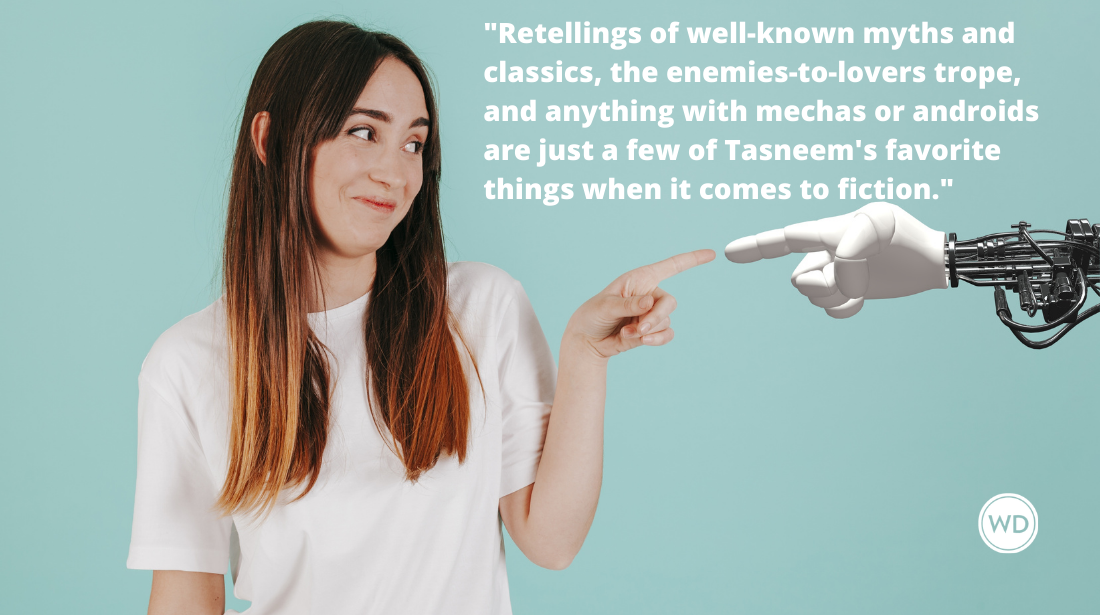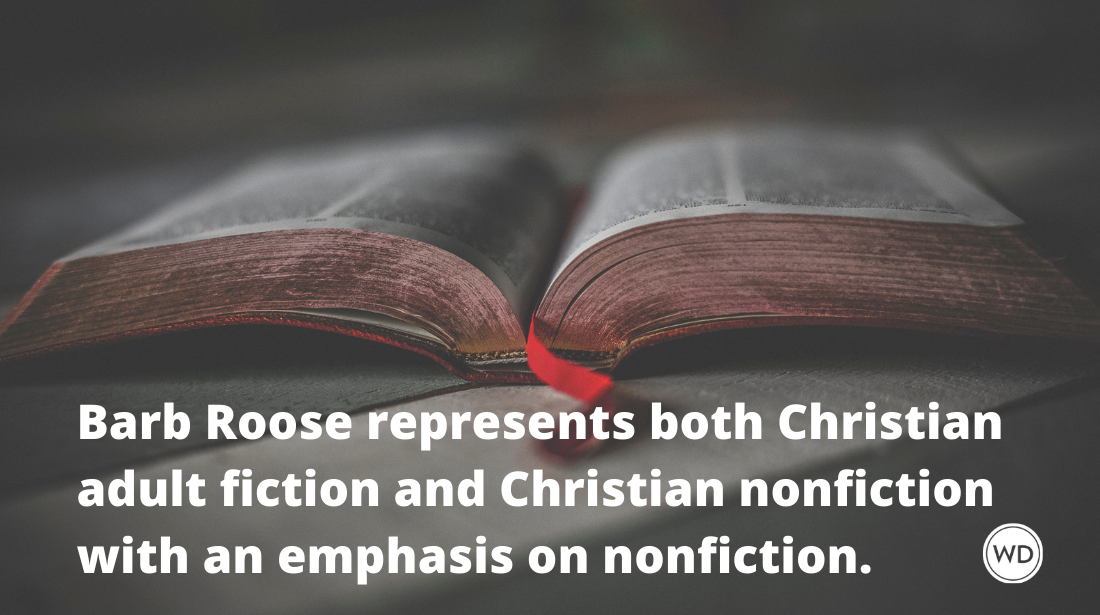Agent Advice: Caryn Wiseman of the Andrea Brown Literary Agency
The best way to get advice from literary agents is to go directly to the source. In this post, get agent advice from Caryn Wiseman of Andrea Brown Literary Agency.
“Agent Advice”(this installment featuring agent Caryn Wiseman of the Andrea brown Literary Agency) is a series of quick interviews with literary agents and script agents who talk with Guide to Literary Agents about their thoughts on writing, publishing, and just about anything else. This series has more than 170 interviews so far with reps from great literary agencies. This collection of interviews is a great place to start if you are just starting your research on literary agents.
This installment features literary agent Caryn Wiseman of the Andrea Brown Literary Agency. She represents two New York Times bestselling authors, first-time authors, and authors at every stage in between. Caryn holds an MBA from the Anderson School at UCLA, and a BS from the University of Virginia, and her fifteen years of business experience prior to joining the Agency emphasized editing and writing as well as sales, negotiation and client management.
She is seeking: young adult and middle-grade fiction and non-fiction, chapter books, and picture books (fiction and non-fiction). Caryn goes deeper into specifics on her submissions page.
GLA: What's the most recent thing you've sold?
CW: One of my recent deals is a YA novel by a debut author, AP sportswriter William Konigsburg, who is one of only two openly gay sportswriters in the country. Bill's novel, Out of the Pocket (Dutton) is about a heavily recruited high school quarterback who is forced to come to terms with his sexuality during an eventful senior year. Another one of my authors, Deborah Underwood, is co-authoring a series with Whoopi Goldberg, called Sugar Plum Ballerinas (Hyperion, forthcoming).
GLA: You have an MBA and a background in business. How does your background help you (and your clients) in agenting?
CW: My business experience includes client management, sales and negotiation skills, all of which are essential to an agent. I also did extensive business writing and editing, and learned the ins and outs of contracts. Finally, I have used my business skills to develop a proprietary editor database for our agency's use, and for tracking my clients' projects. Through it all, I was always a voracious and critical reader. Despite all that dry finance reading, I even started a book club with a few business school friends, which is still going many years later!
GLA: You specialize in juvenile and children's writing. If you were speaking to someone who had written adult fiction or possibly nonfiction and now wanted to try juvenile writing, what basic advice can you give them before starting?
CW: I would tell that person to go to their local bookstore, browse extensively and read everything that they can before they start a children's project. They need to understand the categories of children's books, as well as the differences in writing style between adult and children's writing. A great resource is Nancy Lamb's The Writer's Guide to Crafting Stories for Children.
GLA: Can you explain exactly how chapter books differ from middle grade?
CW: There is a lot of overlap between categories, so the difference between older chapter books and younger middle-grade is often just a matter of marketing. Younger chapter books are for kids who have graduated from Easy Readers and are starting to read more fluently. They usually have 8-10 short chapters, each with a cliff-hanger ending. They are often a series, like Captain Underpants or Magic Tree House, and can be lightly or heavily illustrated. I have a highly illustrated chapter book series coming out next year: Nate Evans and Paul Hindman's Humpty Dumpty Jr., Hard-Boiled Detective. It's a noir-style chapter book series, illustrated by Nate Evans and Vince Evans, in which Det. Humpty Dumpty, Jr. and his sidekick, Rat, solve crimes in "New Yolk City."
Middle-grade is for readers in the 8-12 age group. They can have a complex plot and subplot, and while often humorous, they can certainly be more serious. The vocabulary is more sophisticated than chapter books, and the emphasis is on character. The Qwikpick Adventure Society by Sam Riddleburger (Dial) is an example of a middle-grade book, in which the targeted reader is at the younger end of the spectrum. At the older end of the middle-grade spectrum is "tween." It's realistic, often contemporary, often edgier than traditional middle-grade, and deals with identity issues, school-based situations, family vs. friends, and just how hard it is to be 12. Highly illustrated books for young readers, such as The Invention of Hugo Cabret by Brian Selznick, is a new category of middle-grade books that are heavily illustrated.
GLA: You're looking for nonfiction for young adults, such as picture book biographies. Can you give a few good examples of this for people to read and learn from?
CW: The most important thing to me is that the nonfiction reads like fiction - that there is a "story behind the story." For example, Pamela S. Turner's George Schaller: Life in the Wild, forthcoming from FSG/Kroupa, is a biography of the great field biologist George Schaller. The book explores Dr. Schaller's career both as a scientist and as an advocate for vanishing wildlife. Appealing to children who are interested in animals, science, adventure and the outdoors, each chapter of the book will also be a "mini-biography" of the species being studied. Several of Pamela's other books study certain environments or animals and make science fun and interesting for kids.
GLA: We recently crossed paths at the La Jolla Writers Conference. When writers meet you face to face at conferences, what are some common mistakes they make with their pitch and presentation?
CW: Often, writers are extremely nervous. I don't bite! It is important that they have their pitch down cold and that they can sum up their book in a few sentences. Their pitch needs to be high-level and exciting; they need to hook me right away, and leave me wanting to know more.
GLA: If you receive a query for a YA novel where you feel the book is good but should be retooled to be a middle grade work, will you typically sign on that author and work through the process? Or will you encourage them to resend it after it's been retooled?
CW: It depends on the project. If it's something that I'm absolutely in love with, and I feel that the changes that are needed are not terribly extensive, then I will probably sign on the author. However, if the changes needed are more extensive, then I will give the author general comments, and ask to see it again after it has been revised. It's important to me to know that the client can revise.
GLA: Are there any subjects you're actively seeking right now?
CW: I'm always looking for great YA that is both commercial and literary. I would love to see more contemporary multicultural MG or YA fiction - books that deeply explore another culture, as well as books in which the ethnicity of the character is not the issue; magical realism, urban fantasy, or fantasy that is very much based in reality (no maps needed); sports fiction that has a hook other than the sport, for girls and boys; page-turning thrillers; and realistic fiction with an environmental theme. Humorous chapter books and middle-grade fiction with a great voice and unique characters are always a hit. I do not represent adult projects, so please do not query me regarding adult work.
GLA: Will you be at any conferences in the future where writers can meet you?
CW: I will be at the Big Sur Children's Writing Workshop in December 07, at the SDSU Writers' Conference in January 08, the San Francisco Writers' Conference in February 08, and the Central Coast Conference in September 08. (Editor's note: Caryn will also likely be at the Writer's Digest Books Writers' Conference in Los Angeles on May 28, 2008.)
GLA: The best piece of advice you can give concerning something we haven't talked about?
CW: Make sure that you have a polished, error-free, and complete manuscript to submit - you want to make an excellent first impression. Be sure that you know who your target audience is, and that there isn't a mismatch between your work and your intended reader. A great voice is paramount; whether first or third person, I need to fall in love with your voice. Your characters must be memorable and you need to make me root for your protagonist right from the start. Show your protagonist's journey, through the use of dialogue, the senses, actions and reactions, rather then tell through the use of narrative. Finally, a great opening is absolutely essential. You need to grab me immediately, and keep me turning the pages. If you can make me laugh out loud, cry, or keep reading late at night, you may have a winner!
Chuck Sambuchino is a former editor with the Writer's Digest writing community and author of several books, including How to Survive a Garden Gnome Attack and Create Your Writer Platform.







